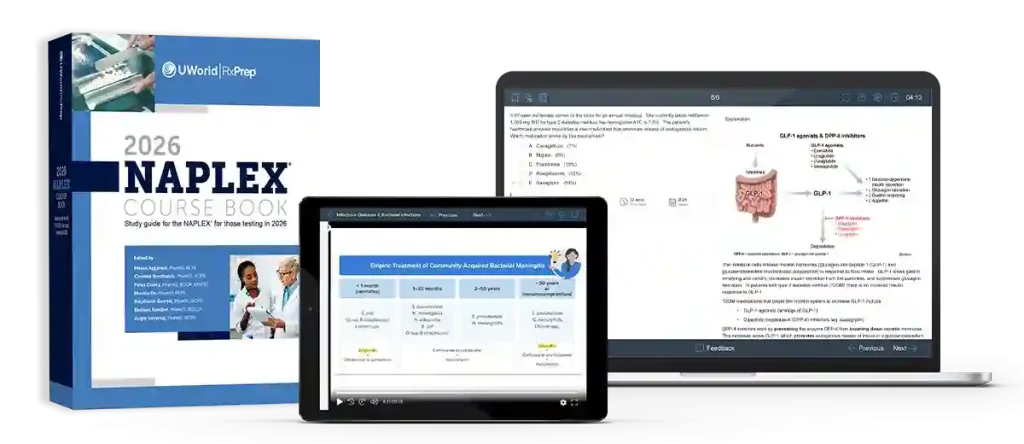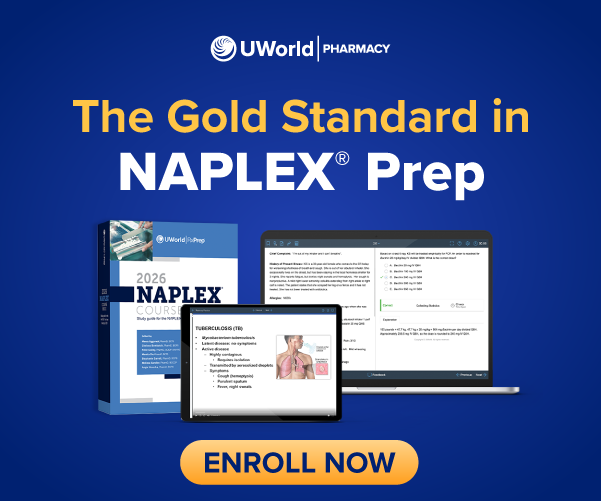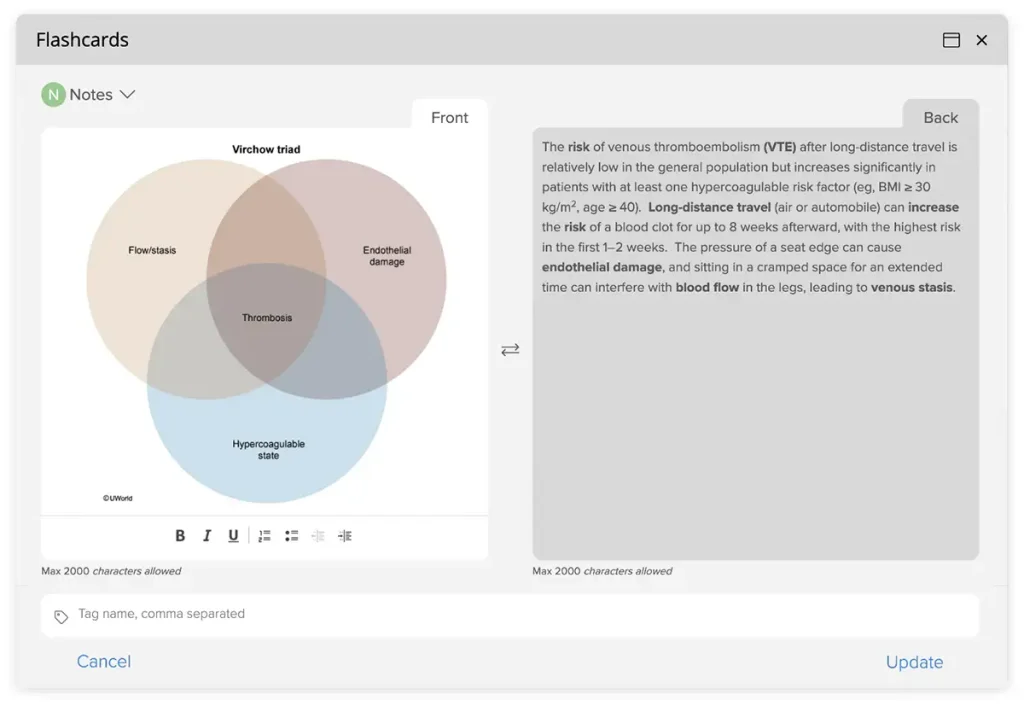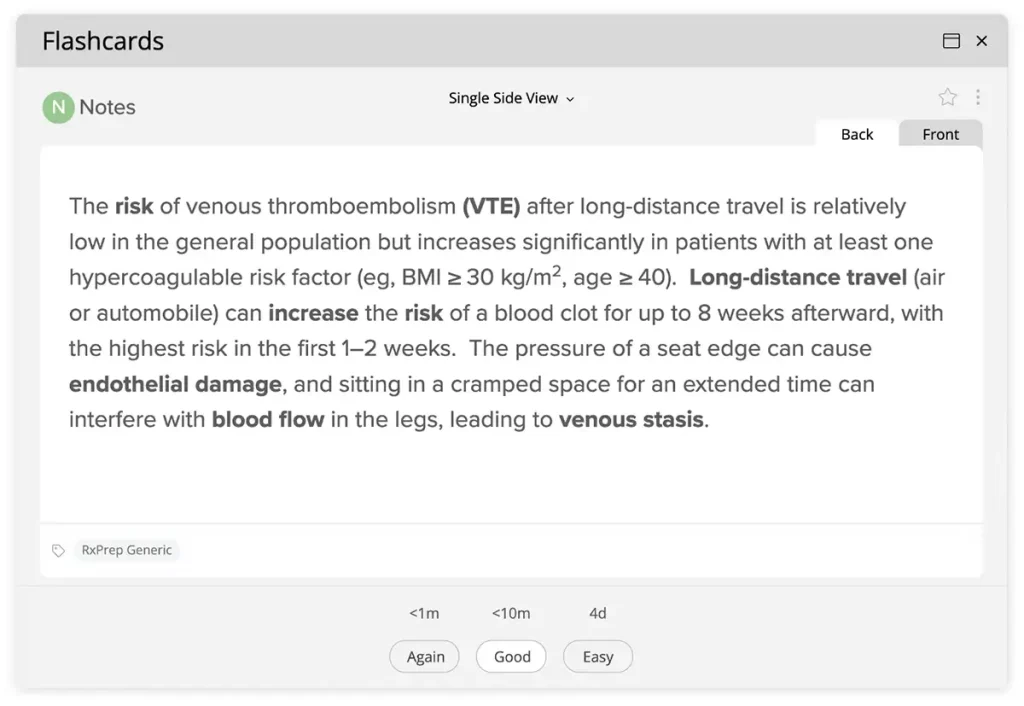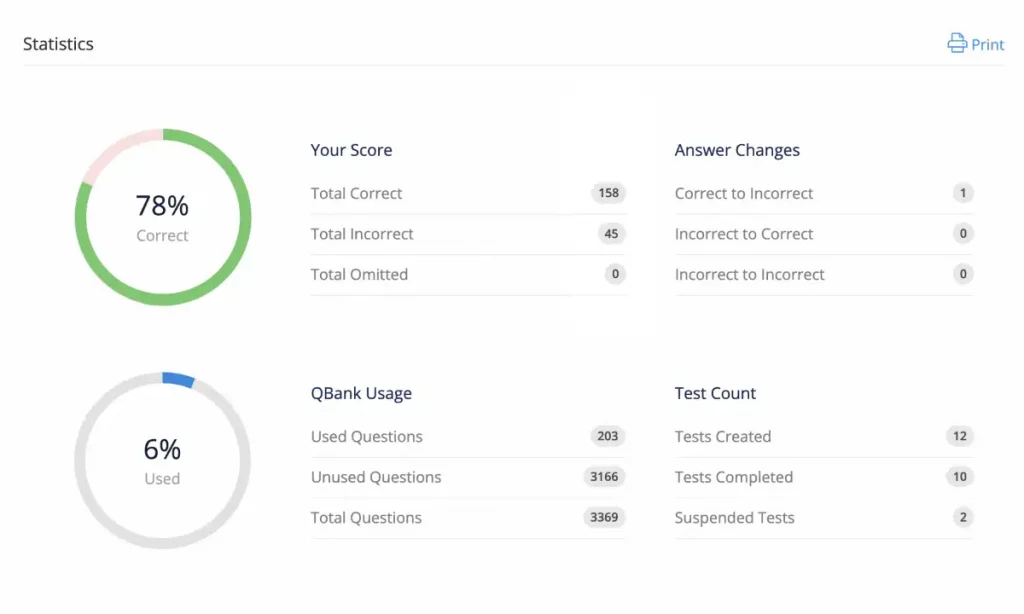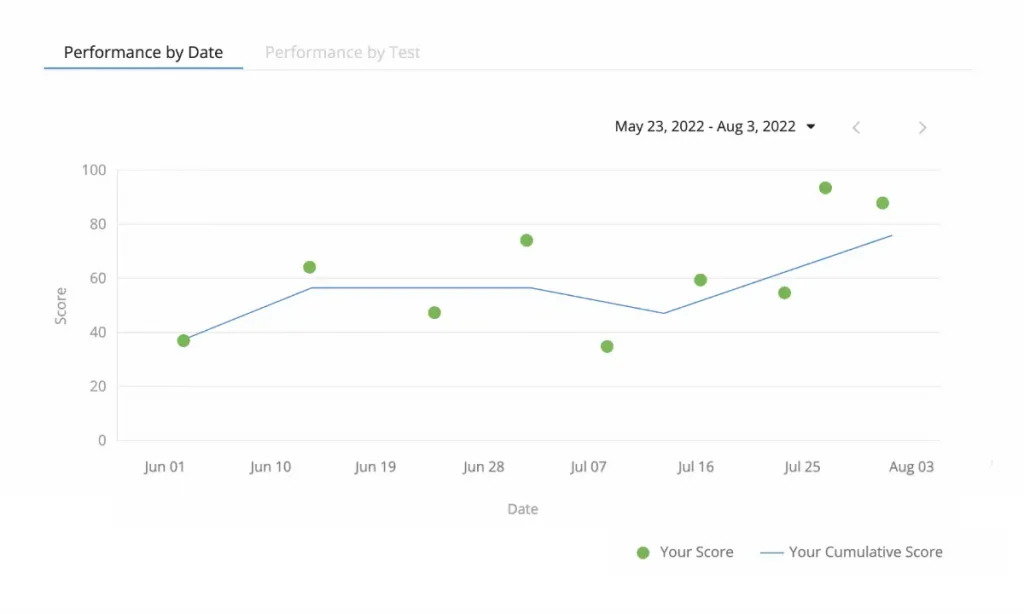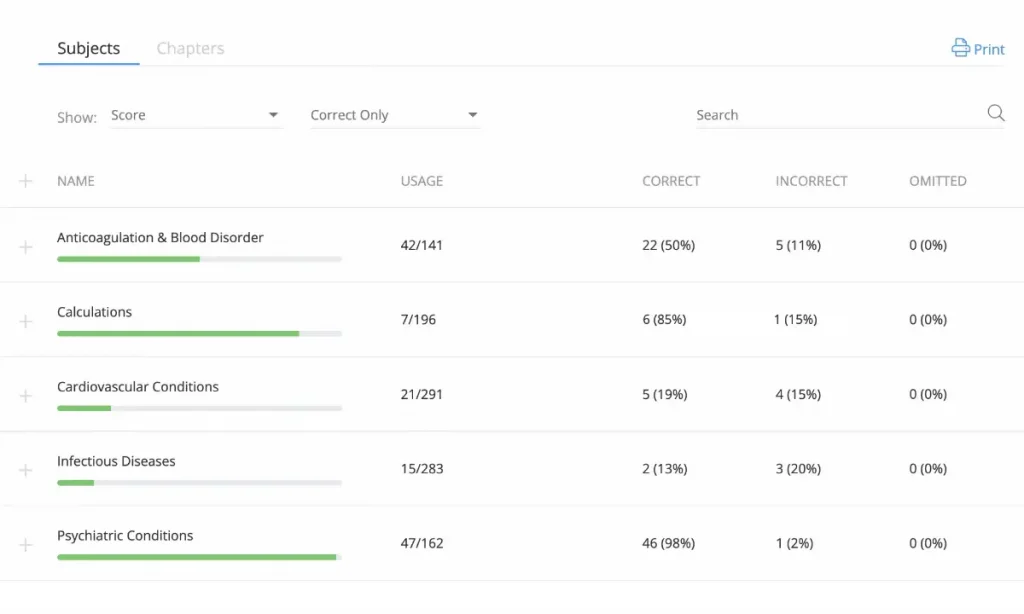The North American Pharmacist Licensure Examination® (NAPLEX®) is a high-stakes exam that challenges prospective pharmacists to demonstrate mastery of concepts required for pharmacy practice. This NAPLEX study guide will help you prepare for the exam by providing helpful tips and tools for creating an independent NAPLEX study schedule and plan.
What to Study for the NAPLEX
To pass the NAPLEX, you must demonstrate adequate knowledge and skills as outlined in the NAPLEX Content Domains (i.e., content areas). These content domains include the ability to assess patient cases and recommend safe and effective treatments, perform calculations, understand compounding and medication delivery systems; and be proficient with the principles of medication safety.
When taking pharmacy licensure exams, there is no such thing as luck. You must master all topics and complete calculations with adequate speed and accuracy. That’s why it is critical to create an effective NAPLEX study plan. The UWorld RxPrep NAPLEX study materials available on the UWorld RxPrep website cover all of the content outlined in the NAPLEX blueprint and can be used to execute your NAPLEX study plan. These materials include the latest UWorld RxPrep NAPLEX course book, question bank (QBank), and video lectures.
Features of the UWorld RxPrep NAPLEX materials
The UWorld RxPrep course book is a companion to the UWorld RxPrep online course, which includes the QBank and video lectures. The course book displays highly testable content with bolded drugs, underlined information, and critical concepts in the Study Tip Gals and Key Drug Guys sections. Refer to the “How to Use the RxPrep Course Book” section at the beginning of Chapter 1.
All of the chapters in the course book have a corresponding online video lecture and a question set in the QBank. The course book and video lectures help you refresh on the content, while the QBank questions allow you to assess your knowledge, evaluate your performance, and remediate where needed. The NAPLEX is largely a case-based exam. You will need to gather information from a case to answer questions such as:
- How many grams of protein per day are provided by parenteral nutrition?
- Which drug is the best option to treat the infection?
While there are some chapters in the course book that help with case-based questions (eg, Answering Case-Based Exam Questions), the UWorld RxPrep QBank is the best tool to assess your ability to evaluate cases and make patient-specific recommendations. Key features of the QBank include:
- Customizable test design to tailor your learning
- Flashcards can be created and organized to fit your needs
- An electronic notebook, which can be used to build and organize notes
- Performance reports, to track and analyze progress
Simulated assessments, including a Required Formulas Test and a Practice NAPLEX Exam
Course Book + Video Lectures + QBank = NAPLEX Success
Use the tips and insights below to learn how to customize and maximize the use of the NAPLEX study materials. You'll also find information on creating a NAPLEX study schedule as part of your NAPLEX study plan.
Tips for organizing topics
There’s no single correct way to approach the subjects and chapters in the UWorld RxPrep course book and QBank. While clinical chapters are important, don’t overlook foundational topics. The NAPLEX Content Domains include material from early pharmacy school courses—such as basic science concepts, drug references, and drug interactions—many of which are covered at the beginning and end of the course book. Building a strong knowledge base in these areas will help you confidently tackle questions in the QBank.
Math is a significant component of the exam and is best mastered with repetition. The UWorld RxPrep study materials include five calculation chapters (in the course book and QBank) plus a Required Formulas Test. Chapter 1 of the course book includes a "Required Formulas Sheet" and a "Checklist" to help you memorize the “must know” formulas. The Required Formulas Sheet is also available as a tear-out at the back of the course book. Starting math early allows you to progress through all of the chapters and learn the key concepts and required formulas while ensuring enough time remains to repeat the QBanks several times, which is needed to obtain both accuracy and efficiency.
Your goal is to complete all of the questions in the UWorld RxPrep QBank, creating tests that mix foundational, calculation, and clinical topics.
How to Study for the NAPLEX
Though your pharmacy school courses provide a foundation, give yourself the best chance to succeed on the NAPLEX by studying with your UWorld RxPrep resources, including the NAPLEX QBank, course book, and video lectures. Just as important as using the right materials is creating a robust NAPLEX study schedule for your NAPLEX study plan.
How long to study for the NAPLEX
First, it is important that you plan to study all the subjects and chapters included in the UWorld RxPrep study materials. Do not skip any subjects or chapters as they could be tested on your final exam.
How much time to dedicate to your NAPLEX study schedule depends on many factors (e.g., knowledge retention from pharmacy school, practice experience, work and personal commitments). We recommend that you start early (6 months to 1 year before your exam) to minimize the amount of cramming you will have to do (which creates unnecessary stress and anxiety). If you are still in pharmacy school, a longer study period (e.g., 18 months) may help you successfully prepare while completing your curriculum requirements and be ready to test shortly after graduation.
If you start early and study at your own pace over an extended period of time, you can solidify your knowledge of topics, give yourself enough time to complete practice tests, and remediate where necessary before your exam. For some perspective, check out our UWorld RxPrep 3 month, 6 month or 12 month Study Planners.
How to effectively use the UWorld RxPrep study materials
When you get to a topic on your NAPLEX study plan, use your time efficiently by first assessing how well you know the topic. If you feel confident about your knowledge, perhaps a quick refresher of testable content in the course book chapter (e.g., bolded drugs, underlined information) is all that is needed before proceeding to the QBank for that topic. If you do not feel confident with the topic, spend more time reading the chapter and watching the corresponding video lecture before attempting the QBank.
To complete the QBank questions for a topic, create a test with questions from that chapter. Questions can be completed in tutor mode, which immediately grades each question and provides an explanation upon submission of the answer. QBanks can also be taken in “timed” mode.
At any point in your studies, you can create integrated tests in the QBank by mixing questions from multiple clinical and calculation chapters. Tools that aid in your studies as you navigate the QBank, as well as how to assess your performance, are described below.
Using the UWorld RxPrep flashcard tool to help retention
As you progress through the UWorld RxPrep NAPLEX QBank, you can create flashcards by transferring written and visual content from the practice questions and explanations to both sides of a new flashcard. You can also add your own notes and create custom tags for improved flashcard searchability.
A "Study" feature within your QBank lets you determine the frequency with which you will encounter your flashcards using spaced repetition, a proven study technique that boosts memory retention. Flashcards you find challenging will appear more frequently, while those you find less difficult will appear less often. Applying spaced repetition to your pharmacy flashcards lets you retain more information over the long term while studying for your board exams.
Flashcards are an effective way to remember content for a high-stakes exam, so we encourage you to incorporate them into your studies. They are a great way to learn key content, such as brand/generic drug names, common drug class side effects, and more. Using flashcards within the UWorld platform also helps keep all of your study resources in one place.
Testing your NAPLEX knowledge
Decide if you know a topic well by reviewing your performance
When completing the NAPLEX question bank:
- Review the detailed performance reports located in the “Reports” tab. The “Reports” tab provides a breakdown of all the NAPLEX subjects and chapters and how you performed in each one.
- Identify your areas of weakness and create additional practice tests and flashcards in those areas to improve.
- Track your progress over time to make sure you are improving. You can track your progress over time by reviewing the “Graphs” tab in the QBank.
Mastering the content you need additional help with
After you have identified your areas of weakness, there are multiple ways to go back and review those subjects and chapters.
- Create flashcards on the topics you need additional help with and review them in the “Study” tab. The flashcard feature in the QBank includes spaced repetition, which improves memory recall and helps you study smarter, not harder.
- Add content to your electronic notebook, which you can review anytime. Take advantage of the editor's functionality to customize your notes. You can bold content, italicize, underline, and much more.
- In the “Create Test” tab of the QBank, you can create a custom practice test based on your areas of weakness. In the “Question Mode” section, select “Incorrect,” and you will see how many questions you got incorrect in each subject and chapter.
- In the “Previous Tests” tab, there is an icon labeled “Analysis,” which allows you to analyze your performance on your previous tests. You can create practice tests based on the questions you missed by clicking on the blue clipboard icon next to each subject.
- You can see an overview of your performance on all NAPLEX subjects in the “Reports” section within the “Performance” tab. You can create practice tests based on the questions you missed by clicking on the blue note icon next to each subject.
How to Create a Customized NAPLEX Study Schedule
Preparing for a high-stakes test requires a well-thought-out strategy and a study schedule. With UWorld RxPrep materials, you can create your own customized NAPLEX study plan or use our 3-month, 6-month, or 12-month study planners.
If you are creating your own study schedule, make sure you include all the topics tested on the exam and consider the following tips:
-
Determine your timeline
Pick a target exam date to work towards. Determine the amount of time per day you have available to study, considering your other responsibilities (e.g., work, family, school assignments). Use the topic completion table below as a guide as to how much time each topic may take. Remember, time should be allotted for all topics.
-
Alternate between math and clinical topics
Start math early, alternating with clinical topics, and plan to repeat the math questions in the QBank several times before your exam. As it gets closer to your test date, create practice tests using a mix of clinical and calculation questions.
-
Always leave weekly catch-up time
It is normal to fall behind, so allowing for catch-up time will help you stay on schedule. If you cannot stick to your schedule, it is best to change your target exam date and adjust your study schedule. The topics you did not prepare for could be on the exam.
-
Leave the two weeks before your estimated test date open
Use the last two weeks to take the UWorld Pharmacy NAPLEX Practice Exam, remediate any missed areas, and review the math and other topics that you may have forgotten. The goal is to master all of the UWorld RxPrep material before testing.
| Estimated Topic Completion Time | ||
|---|---|---|
| 1-2 hours per Topic | 2-4 hours per Topic | > 4 hours per Topic |
|
|
|
- Allergic Rhinitis, Cough & Cold
- Alzheimer’s Disease
- Anemia
- Anxiety Disorders
- Basic Science Concepts
- Benign Prostatic Hyperplasia (BPH)
- Bipolar Disorder
- Chronic Obstructive Pulmonary Disease (COPD)
- Common Conditions of the Eyes & Ears
- Constipation & Diarrhea
- Cystic Fibrosis
- Drug Allergies & Adverse Drug Reactions
- Drug Formulations & Patient Counseling
- Drug References
- Drug Use in Pregnancy & Lactation
- Gout
- Infectious Diseases IV: Opportunistic Infections
- Intravenous Medication Principles
- Migraine
- Motion Sickness
- Parkinson Disease
- Patient Care & Professional Practice
- Pediatric Conditions
- Pharmacogenomics
- Pulmonary Arterial Hypertension
- Sexual Dysfunction
- Sickle Cell Disease
- Sleep Disorders
- Stable Angina
- Stroke
- Thyroid Disorders
- Tobacco Cessation
- Toxicology & Antidotes
- Travelers
- Urinary Incontinence
- Weight Loss
- Acute & Critical Care Medicine
- Acute Coronary Syndromes
- Attention Deficit Hyperactivity Disorder (ADHD)
- Arrhythmias
- Asthma
- Calculations I: Math Basics
- Calculations V: Exam-Style Math Practice
- Chronic Heart Failure
- Compounding with Hazardous Drugs
- Contraception & Infertility
- Depression
- Dietary Supplements, Natural & Complementary Medicine
- Drug Interactions
- Gastroesophageal Reflux Disease (GERD) & Peptic Ulcer Disease (PUD)
- Hepatitis & Liver Disease
- Hypertension
- Immunizations
- Infectious Diseases III: Antifungals & Antivirals
- Inflammatory Bowel Disease
- Lab Values & Drug Monitoring
- Medication Safety & Quality Improvement
- Nonsterile Compounding
- Pharmacokinetics
- Renal Disease
- Schizophrenia/Psychosis
- Sterile Compounding
- Transplant
- Anticoagulation
- Biostatistics
- Calculations II: Compounding
- Calculations III: Parenteral & Enteral Nutrition
- Calculations IV: Clinical
- Common Skin Conditions
- Diabetes
- Dyslipidemia
- Human Immunodeficiency Virus
- Infectious Diseases I: Background
- & Antibiotics by Drug Class
- Infectious Diseases II: Bacterial Infections
- Oncology
- Osteoporosis, Menopause & Testosterone Use
- Pain
- Seizures/Epilepsy
- Systemic Steroids & Autoimmune Conditions
Read More About the NAPLEX
Want to know everything about how the NAPLEX is scored? Here is an easy-to-follow guide to NAPLEX scoring to assist you in developing an effective study schedule.
Want to learn more about NAPLEX? Check out our NAPLEX Exam Guide for everything you need to know, including the registration process and exam format.
NAPLEX Exam Registration, Cost, and Eligibility
Are you prepared for the NAPLEX examination? Here is our article with all the details that you will need regarding NAPLEX registration, eligibility, and cost.
Are you interested in the NAPLEX Blueprint? The article contains the NAPLEX Competency Statements and exam topics you must know.

